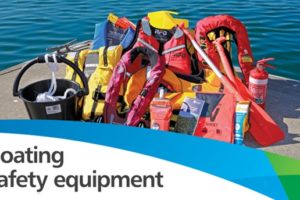 Spending time on a boat is a lot of fun, but it pays to be prepared. That’s where the right safety equipment comes into the picture. Some of what you need is for personal protection, while other equipment helps you make repairs, signal for help, and in general get by until help can arrive. Here are some of the more important items to include on your equipment list.
Spending time on a boat is a lot of fun, but it pays to be prepared. That’s where the right safety equipment comes into the picture. Some of what you need is for personal protection, while other equipment helps you make repairs, signal for help, and in general get by until help can arrive. Here are some of the more important items to include on your equipment list.
Personal Safety and Protection
Even if there is not a lot of storage space on board, it pays to keep a few basics on hand for your personal safety.
1. Suntan lotion is an essential. Even deeply tanned people can experience sunburn. The lotion will provide a barrier that prevents damage, even if you end up stranded on the water for several hours.
2. Life jackets and flotation devices for everyone on board are essentials. If the boat begins to take water, it may or may not be possible to keep it afloat. The life jackets are necessary even for people who are strong swimmers, as they can help everyone remain above water even if they need to rest a bit on the swim back to shore.
3. A first aid kit must be on board. Insect bites, cuts, or similar problems should be treated immediately. With a kit at hand, it’s easy to take care of the issue and get back to enjoying the trip.
4. Keep at least one fire extinguisher on the boat. It can be used to contain small fires. Make sure the extinguisher is filled with a product that is safe to use on engines.
Resources for Repairs
5. A full took kit that includes small spare parts for the engine must be part of the standard supplies. Many minor engine issues can be resolved quickly if you have the basics on hand. Instead of waiting for other boats to come by, the supplies in the tool kit could have you ready to move back to shore in a short amount of time.
Emergency Supplies
Your inventory of boat safety equipment must include things you can use in an emergency.
6. That horns or bells you can use to signal for help. Battery operated models are common, but you can still buy the ones that are operated with a hand crank.
7. Distress lights that can be used to signal other boats are also a good idea. At least one is fine for smaller crafts, but consider having one light or beacon for every 16 feet of length.
8. Even if your boat is powered by some sort of motor, keep oars on hand. In an emergency, you may be able to use two to four oars as a means of propelling the boat closer to shore.
9. Extra fuel, drinking water, and changes of clothing are also good ideas. If the boat layout is open, some type of tarp that everyone can get under if it starts to rain is also practical.
There are other supplies that will come in handy (check Boatbuys.com or similar). Talk with a marine expert and come up with additional items you should keep on hand. With the right approach, you can be prepared for just about anything.
